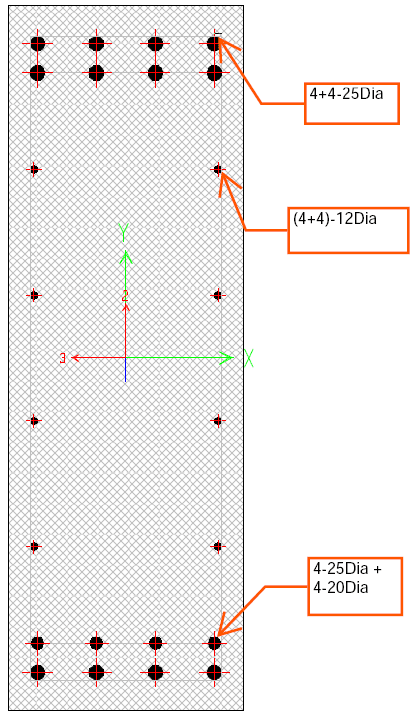Blackstar123
Civil/Environmental
- May 5, 2013
- 253
I have a two story RCC structure with multi bays in X direction and single bay in Y direction. The building LRFS is IMRF. Flexure demand on the beams in Y direction due to seismic loads is coming out to be very high such that some compression reinforcement will be required for -Mu. The span of beam is 10.5m
This is what the design forces at the support looks like.
Size of beam = 400x1200
Required +Mu = 1180 KN-m, As reqd = 2961 mm2, Provided: 4-25Dia + 4-20Dia
Required -Mu = 1680 KN-m, As reqd = 4861 mm2, As’ = 30 mm2, Required No, of bars = 12-25Dia
I cannot increase the size of beam due to clear height requirement (i.e., 5m) but also don’t want to provide maximum steel on the tension face of beam.
If I only provide 8-25Dia on tension face and take advantage of skin reinforcement and the steel present in the compression zone, numbers are showing me some decent increase in flexure capacity of the beam, due to compression force in the steel in compression zone (i.e., 4-25Dia + 4-20Dia).

I would like to ask for advice from experts here if they think this approach is workable.
This is what the design forces at the support looks like.
Size of beam = 400x1200
Required +Mu = 1180 KN-m, As reqd = 2961 mm2, Provided: 4-25Dia + 4-20Dia
Required -Mu = 1680 KN-m, As reqd = 4861 mm2, As’ = 30 mm2, Required No, of bars = 12-25Dia
I cannot increase the size of beam due to clear height requirement (i.e., 5m) but also don’t want to provide maximum steel on the tension face of beam.
If I only provide 8-25Dia on tension face and take advantage of skin reinforcement and the steel present in the compression zone, numbers are showing me some decent increase in flexure capacity of the beam, due to compression force in the steel in compression zone (i.e., 4-25Dia + 4-20Dia).

I would like to ask for advice from experts here if they think this approach is workable.

